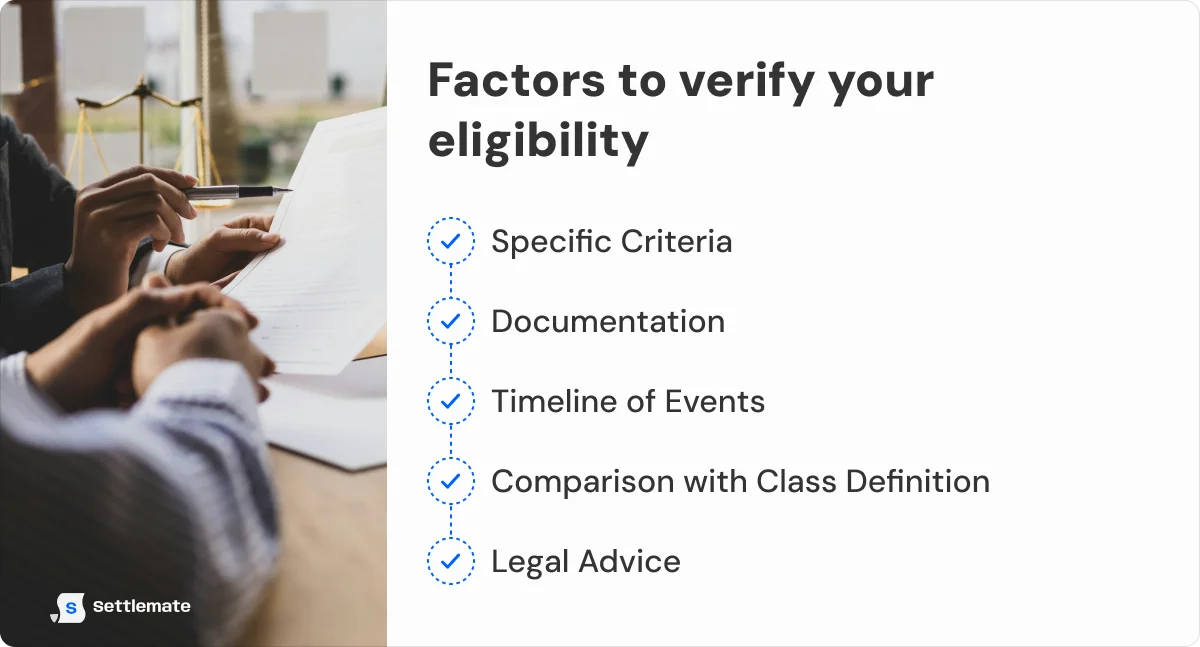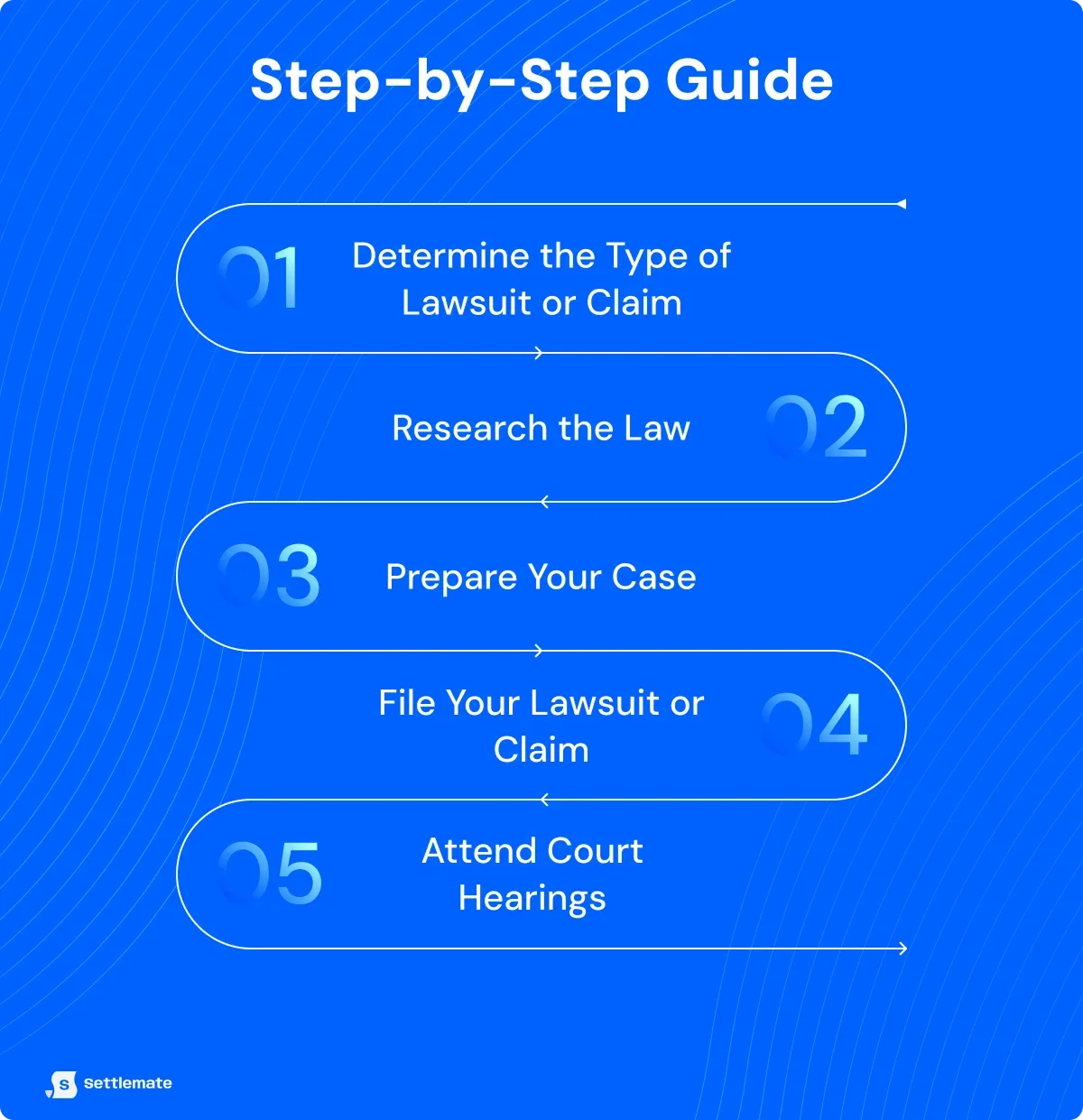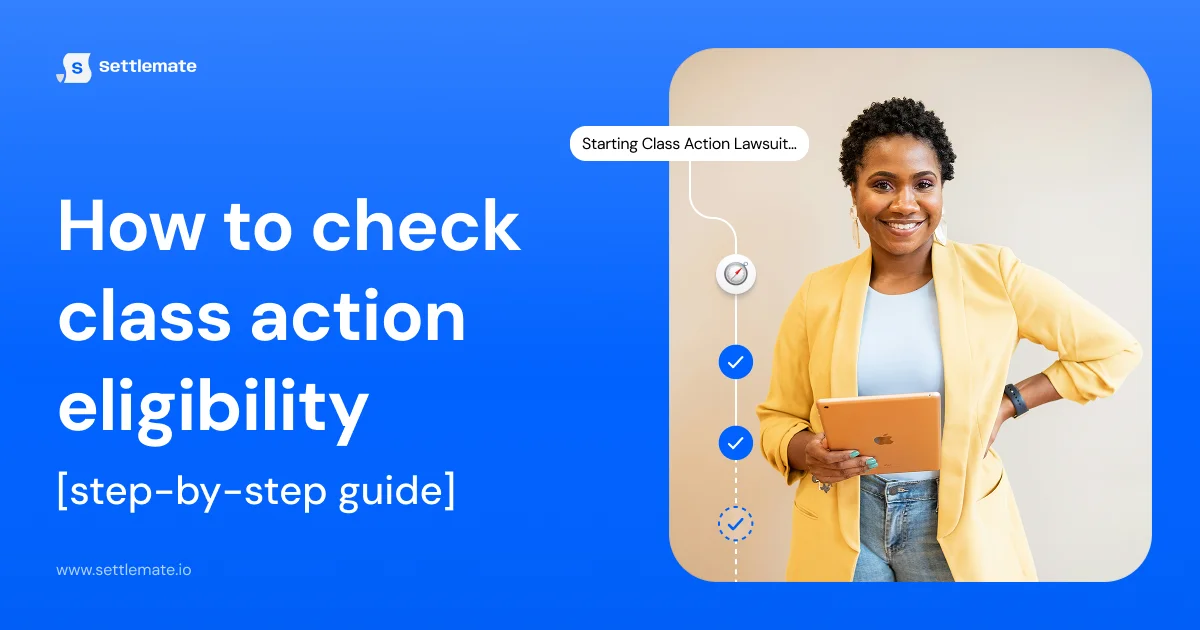Every year, companies pay out billions, and most of it never reaches the people who deserve it. In fact, 90–99% of settlement funds go unclaimed in traditional systems.
Many people never bother to learn how to check class action eligibility because they think it's too complicated, too confusing, or not worth the effort. They ignore notices and walk away from cash that could be theirs.
Here's the real deal: you are owed money. And claiming it isn't rocket science. Follow this guide and you'll see exactly how to check your eligibility, file fast, and secure your payout - without lawyers, without stress, and without missing what's rightfully yours.
Key takeaways:
- Eligibility is not automatic: Class action lawsuits let groups of people file together, but you only qualify if you meet the rules set by the court or settlement administrator. These rules define the time period, location, and type of claim.
- Different factors determine if you qualify: Eligibility often depends on when the issue happened, where you lived, what kind of harm you experienced, and whether you can provide proof. Matching your situation to the class definition is essential.
- Small mistakes can cost you money: Many people miss payouts by waiting until the last minute, ignoring deficiency notices, or using unofficial sites. Filing on time and providing proper documentation are necessary to protect your claim.
- Settlemate makes eligibility effortless: Instead of tracking cases, deadlines, and paperwork yourself, Settlemate shows you how to check class action eligibility, matches you to active cases, files claims, and tracks your payouts in one secure platform.
What class action eligibility actually means
Class action lawsuits save time and money by letting thousands (or even millions) of people who suffer the same harm join together in one lawsuit.
Instead of everyone filing separate cases, the court allows one or more people (called class representatives) to sue on behalf of the group. If the case succeeds or settles, all eligible members of that group can benefit.
But here's the truth: eligibility isn't automatic. Courts and settlement administrators establish clear guidelines for determining who qualifies for benefits. If you meet those rules, you're in. If not, you're out.
Here's how eligibility works in plain terms:
- Certification comes first - A judge has to "certify" the case under Rule 23. That means deciding if the claims are similar enough to be handled together.
- The class gets defined - Once certified, the court (or later the settlement) spells out exactly who qualifies. Think: "All U.S. residents who bought Brand X appliances between 2019 and 2022."
- If your story matches, you're in - Did you buy the product during those dates? Lived in the right state? Had the same issue? Then you're likely part of the class.
- Pending case vs. settlement payout - While the case remains in court, the system usually includes you automatically unless you opt out. Once the parties reach a settlement, you must submit a claim form by the deadline to receive payment.
What can make you eligible?
Each class action is different, but the following are the most common eligibility factors.

Real-world settlements have shown how these play out in practice:
1. Time period
You usually have to have bought, used, or been affected by something within a specific window. If you purchased or used a product outside the covered dates, you don't qualify.
For example, the recent Wheat Thins settlement applied only to purchases made between October 2018 and May 2025. Buy a box before or after that window, and you weren't part of the class, no matter how misleading the label felt.
Similarly, in data breach cases, eligibility often ties to the breach period itself. When Medusind paid $5 million in 2023 to settle a data breach lawsuit, only people whose data hackers exposed during the affected timeframe could file a claim.
2. Location
Some cases are nationwide, but others focus on residents of certain states.
Privacy lawsuits often highlight this divide: Illinois' Biometric Information Privacy Act (BIPA) has led to major settlements for Illinois residents only, despite the same company operating in other states. On the flip side, consumer product settlements often cover the entire U.S., so location matters less.
3. Type of harm
You typically need to demonstrate a specific type of harm or cause of damage.
It might be defective products, hidden fees, false advertising, or data security breaches.
In the Exactech Knee Implant case, the company agreed to an $8 million settlement after patients alleged that certain replacement parts were defective and failed prematurely. People who received the implants and suffered complications or revision surgeries were qualified to claim compensation.
Similarly, in a faulty sports equipment case handled by Yarborough Applegate, attorneys secured a $4.7 million settlement on behalf of a man who was seriously injured when defective gear malfunctioned.
4. Proof and documentation
To collect your share in many class actions, you may need to provide proof, such as receipts, bank or credit card statements, order confirmations, or other relevant documentation.
But not all settlements demand that. Depending on how the deal is structured, you might qualify with minimal proof, or none at all.
Courts often approve claims-made settlements in consumer cases when the defendant doesn't have complete records.
In the Poppi "gut health" settlement, VNGR Beverage LLC agreed to an $8.9 million fund over allegations that its drinks misled consumers on their health benefits. The settlement explicitly allows eligible class members to file a claim without any proof of purchase.
Step-by-step: How to check class action eligibility in 2025
Wondering if you qualify for a class action payout? Here's a clear, step-by-step process to find out:
1. Find relevant class actions
Start by identifying which active or recent class actions might apply to you.
Where to look:
- Official settlement administrators: Large firms, such as Epiq and Kroll, host settlement portals that include notices, FAQs, and claim forms.
- FTC Refunds: The Federal Trade Commission posts government-secured refunds (not traditional class actions, but similar "you could be owed" recoveries).
- PACER (Public Access to Court Electronic Records): PACER lets you search federal court cases by defendant name or case type.
- Aggregators and legal explainers: Sites like ClassAction.org or TopClassActions.com summarize eligibility and link to official claim sites.
- Apps: Settlemate scans open settlements and matches you automatically, eliminating the need for legal research.
Action tip:
Write down the brands, subscriptions, apps, or products you've used in the last 3-4 years. Search the sources above (or let Settlemate scan your inbox).
Bonus tip:
The FTC never charges fees or asks for gift cards, logins, or bank info to issue a refund. If a site demands payment, it's a scam.
2. Read the eligibility criteria carefully
Once you find a settlement, open the "Notice" or "FAQ" section on the official site. This is where you'll learn if you qualify. Look for:
- Who's included - The class definition (e.g., "All U.S. residents who purchased Brand X between 2019–2022").
- Time period - Purchase or usage dates, or data breach window.
- Location - Some cases are nationwide, while others are limited to specific states.
- Proof requirements - What documentation you need (receipts, account numbers, email confirmations).
- Deadlines - Cut-off dates for filing, objecting, or opting out.
Example:
In the PACER Fees settlement, the notice defined the class as "all persons or entities who paid PACER fees between April 21, 2010, and May 31, 2018." If you didn't pay fees in that window, you weren't eligible.
3. Gather your proof of eligibility
Documentation can make or break your claim. Start with what you already have:
- Email receipts and order confirmations
- Bank or credit card statements
- App store or subscription dashboards
- Warranty registrations or loyalty accounts
Example:
In the $45 million Walmart Overcharge settlement (covering weighted goods and bagged citrus), customers without receipts could claim $10–$25, but those who uploaded proof could recover up to $500.
Good news: Even if you miss something, administrators usually mark claims as "deficient" and give you a chance to correct them - by email or mail. Always respond within the stated window.
Time-saver:
Tools like Settlemate can auto-scan your inbox for receipts and match them to eligible settlements.
4. File your claim correctly and on time
Most settlements allow online filing. You'll need to:
- Confirm your contact info.
- Attest that you're part of the class.
- Upload proof if required.
Deadlines are strict. Miss the claim deadline and you lose your share. Always save confirmation emails or screenshots after filing your documents.

Example:
In the FTC v. Avast settlement, eligible customers entered a claim code from the notice; no receipts were needed.
Pro tip:
Filing is always free. If anyone asks for money to "help you file," it's a scam.
5. Track your claim and payout
After submission, your claim will move through stages: received → under review → deficient (if corrections needed) → approved → paid.
- How to track: Most administrators offer online dashboards. Others provide hotlines or email updates.
- Payout methods: Checks, prepaid debit cards, PayPal, Zelle, or direct deposit. Government-secured refunds use similar methods.
- Timeline: Settlements often take months or even years to pay, especially if appeals delay final approval.
Example:
In the AT&T Data Breach settlement ($177 million), payments may include cash up to $7,500 for documented losses. Class members can track claim status on the official portal.
Pro tip:
Some settlements send a second distribution when class members leave money unclaimed. If you have already cashed your first check, you may get a second one automatically.
Common mistakes that cost people money
Even when people qualify for payouts, minor errors often prevent them from receiving the payments. Watch out for these common mistakes:
- Assuming "I'm not eligible:" Even a single purchase or use during the class period may qualify you. Always check the official class definition.
- Waiting until the last week: Deadlines are strict cutoffs. Administrators do not accept late claims under any circumstances.
- Ignoring deficiency notices: A missing receipt or bank statement can sink your claim if you fail to respond to correction requests on time.
- Using unofficial sites or paying fees: Fake settlement pages often ask for money or banking details. Only trust official URLs or the FTC's refunds hub.
- Under-documenting: Submitting receipts, statements, or account records can increase your payout. Do not settle for the minimum if you have more substantial proof.
Why use Settlemate to check class action eligibility in 2025
Manually tracking settlements can be overwhelming. You'd have to keep an eye on multiple websites, remember dozens of deadlines, save receipts, and follow up on deficiency letters.
Most people don't have the time or patience for that, which is why billions in settlement funds never reach the people who qualify.
Settlemate solves that problem by taking the paperwork and reminders off your plate and turning them into an automated process.
Here's what makes it different:
- Instant eligibility matching: Settlemate scans a live database of open settlements and shows you exactly which ones apply to you. No guesswork, and no endless browsing.
- Seamless claim filing: Instead of downloading PDFs or hopping between portals, you can complete and submit claims directly in the app.
- Real-time claim tracking: Settlemate updates you at every stage, from submission to approval to payout, and sends alerts when new matching cases open.
- Smart receipt scanning: The app can retrieve purchase data from your inbox or uploaded documents, identifying claims you might not even know you qualify for.
- Bank-level security: You sign in with Apple or Google, your data is encrypted end-to-end, and nothing gets shared without your consent.
In short: Settlemate makes it easy to learn how to check class action eligibility and get your share without losing hours to manual research.
Stop guessing and start knowing when you're eligible for a class action.
Join Settlemate today and turn confusing settlement paperwork into stress-free claims and faster payouts with Settlemate.









